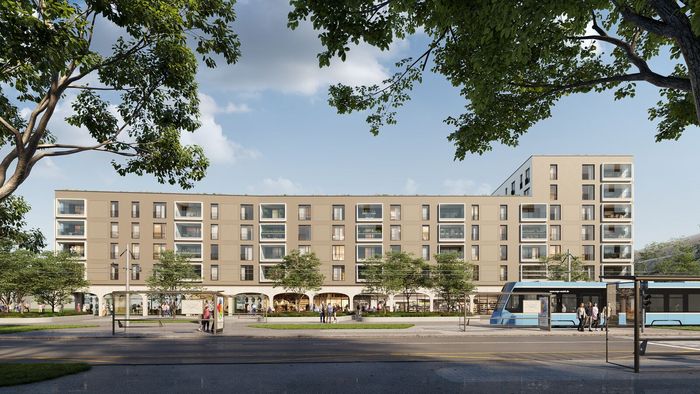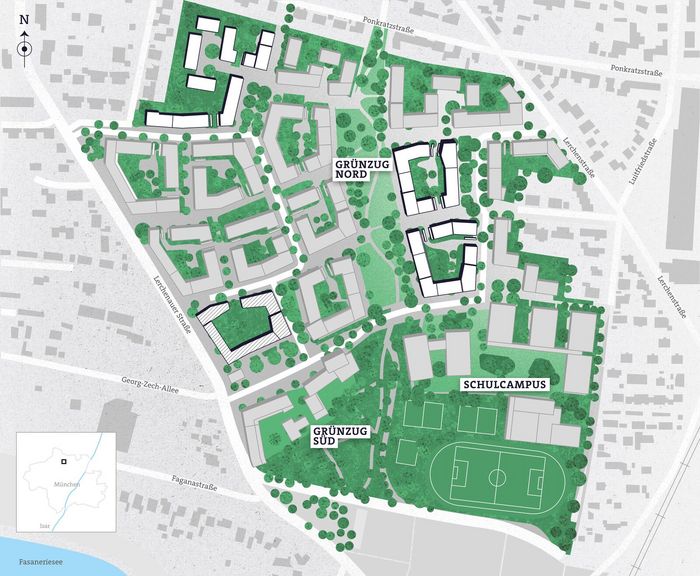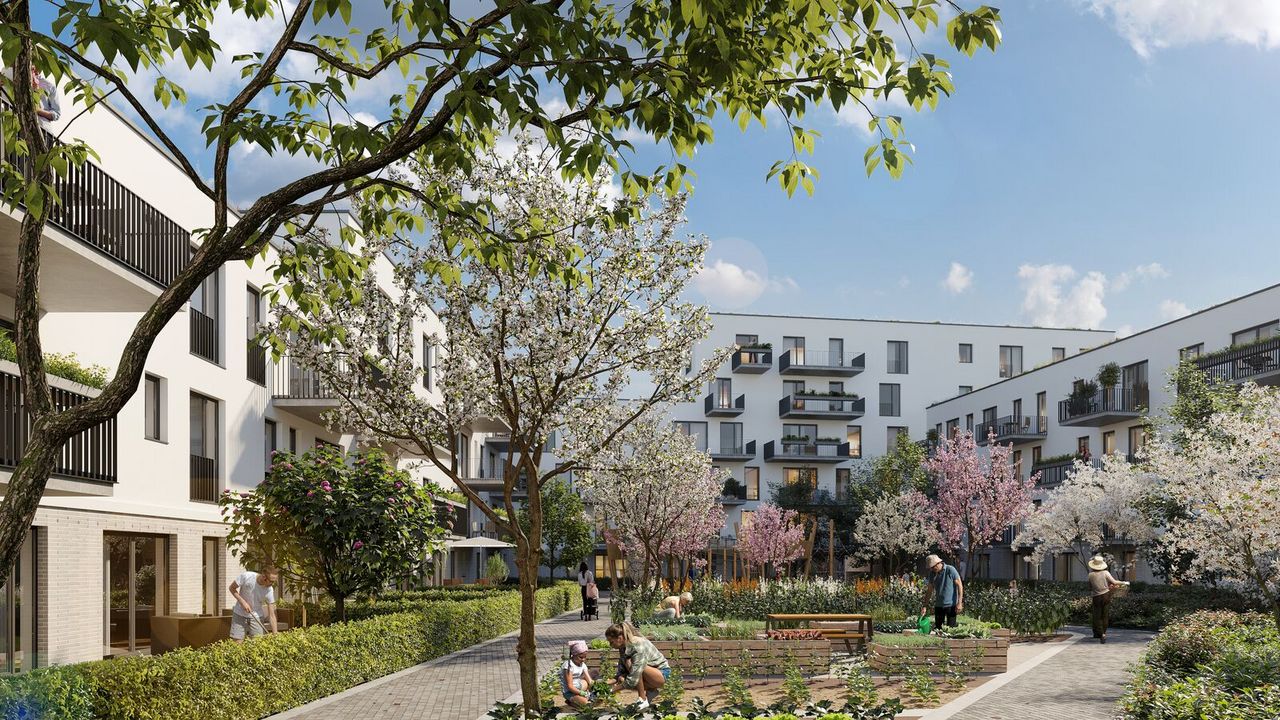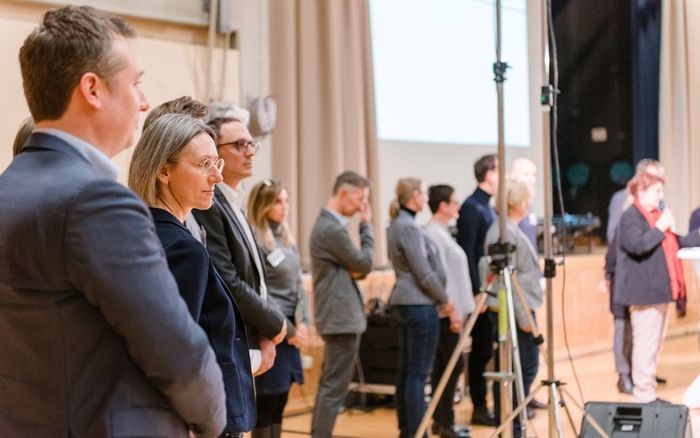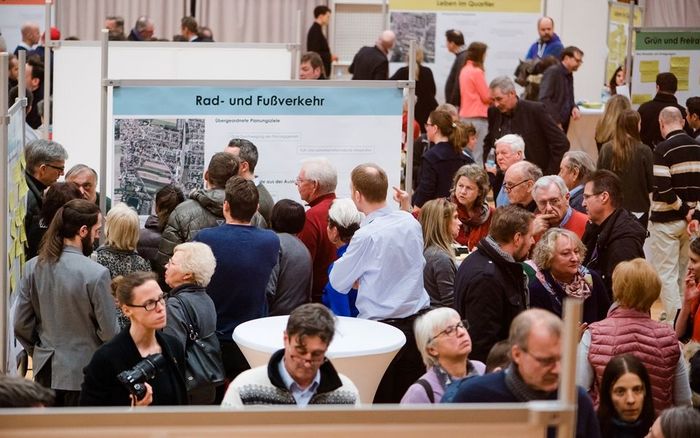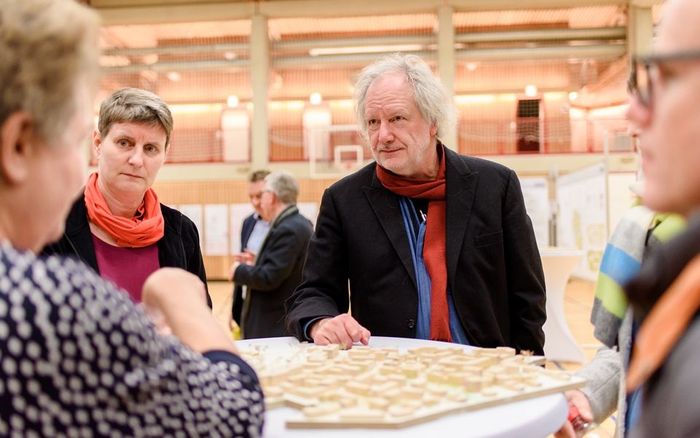Lerchenauer Feld is being planned as a future-oriented and sustainable urban development, with particular emphasis placed on mobility and energy.
An energy concept is part of the development plan. This concept, developed in collaboration with Munich's public works department, rests on two pillars: Firstly, the heat supply will be provided by district heating with a particularly low CO2 emissions, and secondly, it is planned that photovoltaic systems on the roofs of the future buildings provide electricity for domestic use and for electromobility.
Due consideration was given to the mobility of the residents of Lerchenauer Feld from the outset. A comprehensive mobility concept, the likes of which Munich has never seen before, has therefore been developed. It includes three key measures: encouraging pedestrian and cycle traffic, reducing the attraction of private cars, and expanding public transportation services. Encouraging pedestrian and cycle traffic is closely linked to a fundamental urban planning decision: Lerchenauer Feld has been planned as a urban development where everything is within easy reach. Local amenities, social infrastructure, etc. will be located directly in the urban quarter. As part of the master plan, motorized private transport will be reduced to 20 percent – meaning that the residents in the urban quarter will only make one in five journeys by car. At the same time, the use of bicycles will be encouraged, thanks for example to high-quality bike racks and a network of bike paths. It is also intended that public transport be improved, for example with a new bus line and a new Y-shaped tram line to Am Hart and Lerchenauer Feld in the north of Munich. The development plan already provides for a tram line.
![[Translate to EN:] [Translate to EN:]](/media/user_upload/content/Lerchenauer_Feld/Website_Image_L_1600px-Lerchenauer_Feld_250617_Quelle_BHG_1.jpg)
